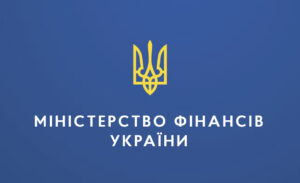
Construction has begun in Dubai on one of the world’s most unusual residential skyscrapers, the Muraba Veil tower, which will be approximately 380 m high and only about 22.5 m wide, meaning that it will essentially be a single apartment along the facade. The project is being implemented by the developer Muraba in collaboration with the Spanish firm RCR Arquitectes, winner of the 2017 Pritzker Prize. The tower will be a 73-story residential building with 131 luxury apartments ranging from two to five bedrooms, each occupying the entire width of the floor and offering panoramic views of Dubai and the canal.
The main visual motif of Muraba Veil is a metal “veil.” The facade will be wrapped in a translucent shell of perforated stainless steel that filters sunlight and reflects the changing color of the sky throughout the day. According to the architects’ concept, this is a modern interpretation of the traditional Arabic mashrabiya lattice, which provides both privacy and natural shading.
The layouts are inspired by the typology of the classic Arab house: from the outer layer with bedrooms and terraces, the space gradually transitions to a cooler “inner core” where common areas and landscaped courtyard oases are located. This allows for a natural reduction in temperature and less strain on air conditioning systems.
Muraba Veil is being built next to Sheikh Zayed Road and faces the Dubai Water Canal, in one of the city’s few truly pedestrian-friendly areas, with promenades, running and cycling paths, cafes, and quick access to Kite Beach.
The project will be the fifth joint venture between Muraba and RCR Arquitectes and is scheduled for completion by December 2028. The starting price for apartments in Muraba Veil is announced at 18 million dirhams (about $4.9 million), which automatically places the project in the super-premium housing segment and secures its status as one of the most expensive addresses in the emirate.
Muraba Veil fits into Dubai’s long-term strategy to strengthen its status as a world leader in high-rise and landmark construction. The city already boasts the world’s tallest building, the Burj Khalifa, and the recently announced second tallest skyscraper, the Burj Azizi; Dubai also has the highest concentration of towers over 300 meters in the world.

US Treasury Secretary Scott Bessent said that the European Union’s sanctions policy against Russia has not achieved its goals, pointing out that the EU is already preparing its 19th package of restrictive measures.
According to Bessent, European partners have informed him of the development of another, 19th package of sanctions against Russia. “In my opinion, if you are doing something for the nineteenth time, it means you have failed,” the US Treasury Secretary said in an interview with NBC, noting that he considers the current EU measures to be insufficiently effective.
He also accused European countries of continuing to indirectly finance the Russian economy through energy purchases, despite the restrictions that are formally in place.
Bessent has repeatedly called on European countries to take tougher measures against Russian energy revenues, including the introduction of secondary tariffs and duties against buyers of Russian oil in third countries, arguing that it is precisely tough pressure on oil and gas revenues that can reduce Moscow’s resources for waging war.

A formal reception was held in Kyiv to mark the Independence Day of the Republic of Poland, during which the Ambassador of the Republic of Poland to Ukraine, Piotr Lukashevich, gave a speech on the importance of independence, national unity, and solidarity with Ukraine.
In his address, Ambassador Łukaszewicz emphasized that this holiday is not only the most important national day for Poles, but also a profound reminder of the path that Poland has traveled and continues to build. He stressed that Poles honor the generations who dreamed, fought, and ultimately restored the sovereign Polish state.
The ambassador recalled the words of Polish Prime Minister Donald Tusk, who said this year in Gdańsk: “Niepodległość to wspólna sprawa” (Independence is a common cause). “It is not only a personal achievement, but a shared responsibility, res publica. We celebrate the miracle of unity, when, after many years of division, Poles from different regions and with different views united and rebuilt their state,” the diplomat said.

He stressed that Poland’s greatest triumphs were never the result of unanimity, but rather the result of solidarity. According to the ambassador, patriotism does not mean pitting one Pole against another, but rather unity and the joint construction of something greater.
Drawing parallels with Polish history, Lukaszewicz said that Poles’ thoughts naturally turn to the Ukrainian people, who are now fighting for the same thing that Poles fought for not so long ago: the right to live in freedom, dignity, and sovereignty.
The ambassador emphasized that today Poland is a strong and free state, a modern democratic country, an active member of the EU and NATO, and a stable partner in a changing world. He mentioned Poland’s economic achievements, as well as the launch of the first Polish military satellite, emphasizing that the country’s strength comes not only from economic or political successes, but above all from the unity of society and the willingness of each generation to take responsibility.
Lukasevich noted that independence does not exist in isolation and that freedom in the modern world is interdependent, so the security of one nation strengthens the security of all.
He commented separately on the recent attack on the Polish railway, which Warsaw considers an act of sabotage. According to him, Poland is well aware of terrorists and opponents, and these threats will not break its resolve.
At the same time, the ambassador thanked Poland’s allies and partners, in particular Ukraine, NATO and EU countries, as well as states whose military contingents are stationed on Polish territory. “You are with us, and we are with you,” he said.
Poland was the first country in the world to recognize Ukraine’s independence on December 2, 1991. Diplomatic relations between Ukraine and the Republic of Poland were established on January 4, 1992, after which the Polish Embassy in Kyiv and the Ukrainian Embassy in Warsaw began operating in 1992.

A new high-tech mill with a capacity of 120 tons of flour per day has been launched in Cherkasy, according to a Facebook post by Andriy Tabalov, chairman of the supervisory board of Cherkasy Bakery and CEO of Voloshkovoe Pole Dairy Company.
“We have invested more than UAH 83 million in the construction of the new mill and its complete technical equipment. This is an important contribution to the country’s food security,” he wrote.
Tabalov noted that modern technologies have made it possible to switch to the production of premium flour and reduce electricity consumption.
The mill is already in operation and supplies flour to the Cherkasy, Kirovohrad, Chernihiv, Odesa, and Dnipropetrovsk regions.
Cherkasy Bakery PJSC was registered in 1996. It specializes in the production of bread and bakery products, flour confectionery, cakes, and short-term storage pastries. The products of PJSC Cherkasy Bakery are sold both on the domestic market and exported to the EU, the US, Asia, and Africa. The authorized capital is UAH 29.02 million.

Light snow is expected in western Ukraine on the night of Monday, November 24, with moderate snow in the Carpathians and no precipitation during the day, according to the Ukrainian Hydrometeorological Center. Icy conditions are expected on the roads in the west of the country on that day. The temperature at night will be 1-6° below zero, and around 0° during the day.
The rest of the country will see rain, with wet snow in the northern and central regions at night. Significant precipitation is expected in some parts of the Chernihiv and Sumy regions. During the day, most of the northern and central regions will be dry.
Temperatures on Monday night and during the day will be 3-8°C, in the northern and Vinnytsia regions 0-5°C, in the south and southeast 5-10°C at night and 10-15°C during the day.
The wind will be mainly westerly, 7-12 m/s, with gusts of 15-20 m/s in the Carpathians during the day.
In Kyiv on November 24, rain and wet snow at night, no precipitation during the day. Wind from the west, 7-12 m/s. Temperature at night 0-2°C, during the day 2-4°C.
According to data from the Boris Sreznevsky Central Geophysical Observatory, the highest temperature in Kyiv for the entire period of meteorological observations was 14.1°C on November 24, 1926, and the lowest was -15.4°C in 1998.
On Tuesday, November 25, light rain and wet snow are expected in the western regions of Ukraine, moderate snow in the Carpathians, and icy roads. The temperature at night will range from 2°C to -3°C, and during the day from 1°C to 6°C.
No precipitation is expected in the rest of the country. Fog is expected in some areas in the south and southeast at night and in the morning. Nighttime temperatures will range from 0 to 5°C, with daytime temperatures ranging from 8 to 13°C. In the northern regions, nighttime temperatures will range from 3°C to -2°C, with daytime temperatures ranging from 3 to 8°C.
The wind will be mainly southeasterly, 7-12 m/s, with gusts of 15-20 m/s in some places in the northern, central, and southern regions during the day.
In Kyiv, there will be no precipitation on November 25. The wind will be southeasterly, 7-12 m/s. The temperature at night will be around 0°C, and during the day 5-7°C.

Cash expenditures of Ukraine’s general fund state budget in October 2025 amounted to UAH 312.6 billion, which is UAH 33.6 billion, or 10.7%, more than in October 2024, according to the Ministry of Finance.
According to the Ministry of Finance, in January-October 2025, general fund expenditures reached UAH 3.16 trillion, exceeding the figure for the same period last year by UAH 507.2 billion, or 19.1%.
“General fund expenditures of the state budget for security and defense in January-October 2025 amounted to UAH 2 trillion, or 63.3% of all general fund expenditures. In particular, UAH 220.6 billion was spent in October,” the report said.
A month earlier, UAH 210.8 billion was allocated to security and defense, with total general fund expenditures of UAH 312.6 billion, indicating continued growth in monthly defense payments.
At the same time, for the sixth time in a row, the Ministry of Finance does not disclose more detailed items of military expenditures in its operational report – data on payments of monetary support to military personnel, purchases of military equipment, weapons, ammunition, and defense products, as well as separate transfers to the National Health Service of Ukraine (NHSU), the Pension Fund, and the Entrepreneurship Development Fund.
At the same time, according to Finance Minister Serhiy Marchenko, speaking in the Verkhovna Rada on September 19, the monthly level of monetary support for the military in 2025 will increase significantly. “January – UAH 78.8 billion, February – UAH 86 billion, March – UAH 86 billion, April – UAH 91 billion, May – UAH 97 billion, and August also UAH 98 billion,” the minister said.
In October 2024, the Ministry of Finance reported the payment of UAH 86 billion in monetary support, which allows us to assess the scale of growth in military payments against the backdrop of the ongoing full-scale war.